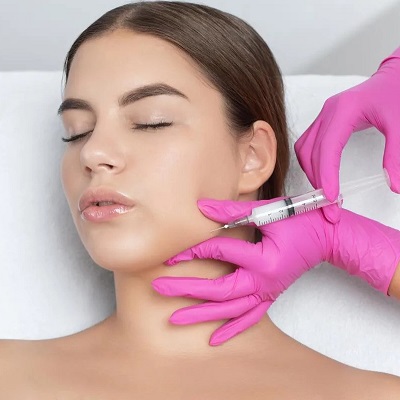
One of the most popular procedures to get a sharp and defined jawline is using jawline fillers without a surgical operation. However, minor lumps or swelling in the space tend to occur after treatment is done. How Long Do Lumps Last After Jawline Fillers? You may wonder this question because you just had fillers yourself.
The quick answer: maximum lumps are transient and fade because the filler settles.
But information on why they take place, how long they last, and what you can do will help you feel more confident during recovery.
Why Lumps Appear After Jawline Fillers:
Lumps after jawline fillers can happen for numerous reasons, and most are a part of the regular restoration technique.
1. Swelling and Filler Settling Process:
When filler is injected, your skin and tissue swell slightly. This is your body’s way of restoration. As the swelling reduces and the filler integrates with your natural tissue, the area smooths out.
2. Injection Technique and Product:
How your injector places the filler and the form of filler used can also affect the way it feels in the beginning. Thicker fillers made for jawline sculpting can also take a piece longer to soften.
Swelling vs. Healing Timeline:
Here’s what most humans enjoy after jawline fillers:
| Day/Week | What You May Notice |
| Day 1-3 | Swelling, tenderness, and small firm areas. |
| Day 4-7 | Swelling begins to head down; lumps feel smaller. |
| Week 2 | Filler starts to settle; maximum swelling long gone. |
| Week 3-4 | Jawline seems smoother and more natural. |
How Long Do Lumps Usually Last After Jawline Fillers?
Normal Recovery Period:
For most humans, lumps usually last approximately 1–2 weeks. This is the time it takes for swelling to fade and filler to settle.
When It May Last Longer:
If you continue to observe firm regions after 3–4 weeks, it might be because of:
- Strong scar tissue within the region.
- Uneven filler placement.
- Rare response to the product.
When to Worry About Lumps After Jawline Fillers:
It’s normal to revel in small, smooth lumps in the treated region for the primary few days after jawline fillers. These are commonly due to brief swelling or the filler settling under the skin. Nonetheless, when the lumps are hard, painful, increasing in size, or persisting for weeks, it would be necessary to visit your injector. You can also get persistent lumps, which are indications of filler movement, poor distribution, or an inflammatory condition that may not be treated without professional help.
When to See Your Injector:
If you observe:
- Sudden boom in swelling after some days.
- Severe pain or discoloration.
- Hard lumps that don’t soften after 3 weeks.
Then you should contact your company straight away.
Before and After, What to Expect:
Before Treatment: Your jawline might also appear tender or undefined, with no swelling or tenderness.
- Day 1–3 After Fillers: Slight swelling, mild redness, and small bumps are ordinary. The jawline might also appear extra sculpted; however, it experiences organization in a few areas.
- 2 Weeks Later: Lumps have to be substantially reduced, and the jawline appears smoother and extra natural.
How to Speed Up Lump Healing After Fillers:
Most post-filler lumps clear up naturally within 1–2 weeks; however, positive steps can assist the healing process. Only on the implied suggestion of your injector, a gentle rubdown sometimes smooths the region. Drinking lots of fluid, avoiding alcohol, and holding your head up in bed during naps will reduce the swelling in a short time. You should avoid touching or pushing on the treated area more than necessary because it may disrupt the filler position and the progressive healing process.
Final Thoughts:
So, how long do lumps remain after jawline fillers? For most human beings, it’s simply 1–2 weeks, and that’s a regular part of healing. With correct aftercare and an experienced injector, your jawline will settle superbly and come up with the sculpted appearance you desired.
If you ever experience uncertainty about your healing, it’s usually better to talk to your surgeon. That way, you can experience your outcomes with confidence.





